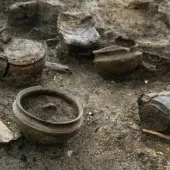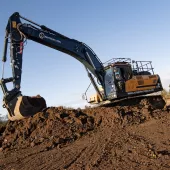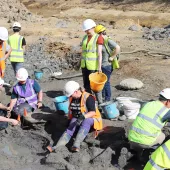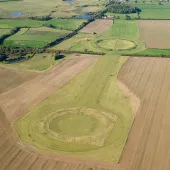Iron Age settlement unearthed at Brenkley Lane
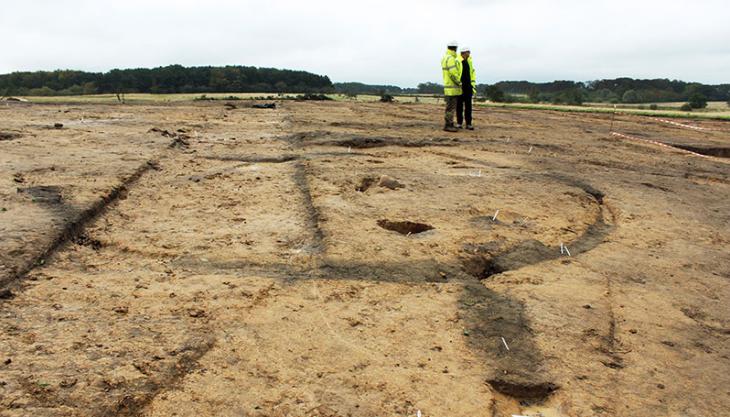
Excavations at surface coal mine reveal how area was worked and inhabited through the ages
FASCINATING insights into part of north-east England’s ancient history have been unearthed by archaeologists working at Brenkley Lane surface mine, to the north of Newcastle.
Excavations carried out by Headland Archaeology on behalf of mine operators Banks Mining have revealed a sprawling Iron Age settlement across a 5ha area which is centred on four roundhouses within a double rectangular enclosure.
The two month-long dig has revealed a complex series of archaeological features spread across the site, with the remains being grouped into three main phases of activity.
The majority of the remains uncovered relate to an extensive period of occupation during the Iron Age, and date back well over 2,000 years.
They consist of a series of large rectangular ditches enclosing several concentrations of ring gullies, which are the foundation trenches of the settlement’s buildings.
Pits and other linear features, such as boundary and enclosure ditches, have also been uncovered, with the central enclosed area containing closely aligned ring gullies that suggested buildings had been rebuilt several times.
The artefacts, which include Iron Age quernstones for processing grain, a spindle whorl for weaving, ‘briquetage’ ceramic vessels that were used in salt transportation and Bronze Age pottery, suggest that a mixture of domestic and food-processing activities were carried out in the area, with further similar features to the west of the site thought likely to relate to the management of livestock.
An early Bronze Age cemetery, dating from between 2,100BC and 750BC, is represented by three cremations, while a period of medieval activity between 500 and 1,500 years ago is shown by a grain-drying kiln and extensive rig-and-furrow agriculture.
A full report on the findings of the Brenkley Lane dig is now being prepared by Headland and is expected to be published next year.
In 2008, one of the most complete Iron Age settlements ever excavated in the North East, which comprised approximately 50 roundhouses in an enclosed 2ha area, was unearthed at Banks’ now-restored Delhi surface mine on the Blagdon Estate, near Seaton Burn.
Mark Dowdall, environment and community director at The Banks Group, said it was fascinating to see how this area was worked and inhabited through the ages. ‘We’ve worked closely with archaeologists across many of our sites for several years to ensure that detailed investigations are carried out and proper records kept of anything of interest that’s found, and these discoveries simply wouldn’t be coming to light without the surface mining work that’s facilitating them,’ he commented.
‘We’re very pleased that our coal mining operations at Brenkley Lane have led to these latest discoveries, which further enhance the understanding of our region’s social and industrial history, and are looking forward to reading the full report on them when it's ready.’
Ed Bailey, project manager at Headland Archaeology, added: ‘The results of our work have added to the growing body of Iron Age sites around Newcastle that have been excavated in recent years, which suggests a dynamic landscape of interrelated settlements across the area during this period.
‘We’ve now begun post-excavation analysis on our findings with a view to submitting the completed report next year to Archaeologia Aeliana, the journal of the Society of Antiquities of Newcastle upon Tyne.’


